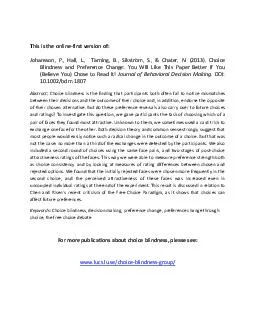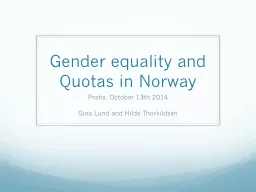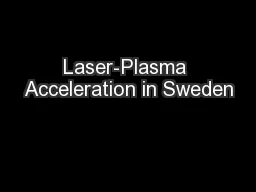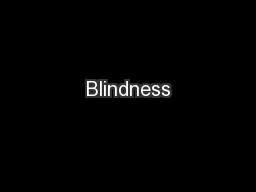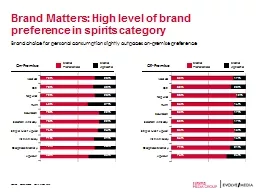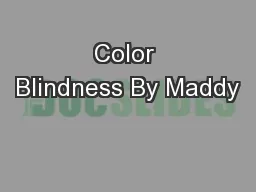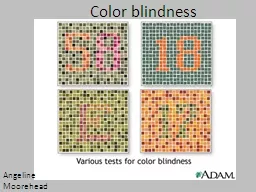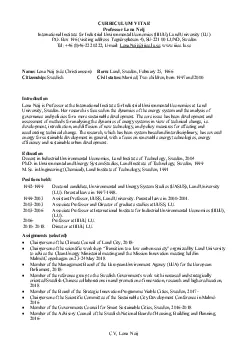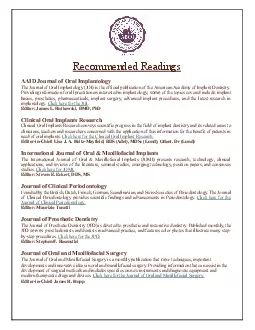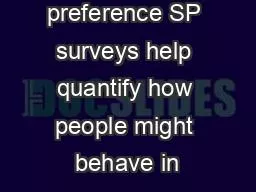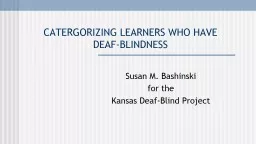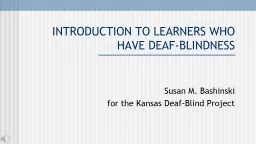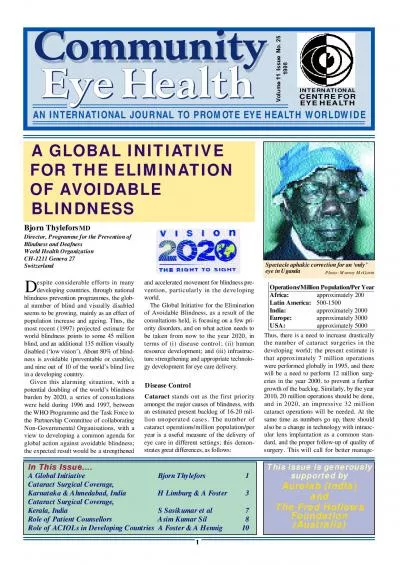PDF-Choice Blindness and Preference Change You Will Like This Paper Better If You Believe
Author : natalia-silvester | Published Date : 2015-02-23
But do these preference reversals also carry over to future choices and ratings To investigate this question we gave participants the task of choosing which of a
Presentation Embed Code
Download Presentation
Download Presentation The PPT/PDF document "Choice Blindness and Preference Change Y..." is the property of its rightful owner. Permission is granted to download and print the materials on this website for personal, non-commercial use only, and to display it on your personal computer provided you do not modify the materials and that you retain all copyright notices contained in the materials. By downloading content from our website, you accept the terms of this agreement.
Choice Blindness and Preference Change You Will Like This Paper Better If You Believe: Transcript
Download Rules Of Document
"Choice Blindness and Preference Change You Will Like This Paper Better If You Believe"The content belongs to its owner. You may download and print it for personal use, without modification, and keep all copyright notices. By downloading, you agree to these terms.
Related Documents

